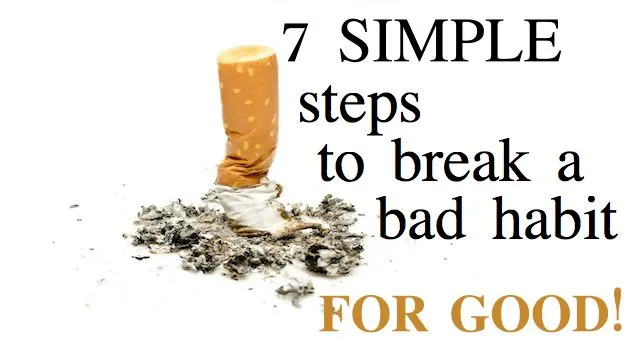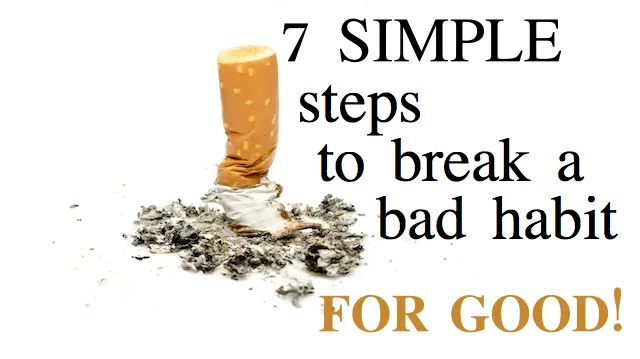
- Share on Facebook90
- Share on Pinterest
- Share on Twitter
How many times have you cursed a bad habit that keeps catching up with you — whether it’s smoking, sitting too much, biting your nails, overspending, drinking too much, or snapping at your spouse.
These behaviors are called habits because they are deeply ingrained into the psyche. Although they can be annoying, frustrating and even harmful, they don’t make you a bad person. (Some of your shameful habits may even be good for you!) They are simply the result of some type of repeated conditioning and response that has arisen during your life. Often we do these habits without thinking, or without even realizing what we are doing.
Unfortunately, bad habits can damage your self-esteem and relationships. They can weigh down your mental and emotional health as you feel unable to surmount these self-imposed obstacles.
Here are some ideas on how to get your brain out of that repetitive, damaging autopilot behavior and back on track where you want to be.
Step 1: Recognition and understanding
Identifying a repetitive action as a bad habit is the first step toward solving the problem. Maybe it’s finally admitting that constantly running late isn’t just the world conspiring against you, but that it’s something you can change. Or maybe you’ve clued in to the spare tire and lean wallet resulting from a few too many cocktails on the weekends. Once you’ve recognized the habit, reflect on its repercussions on your life, so that you can understand why you really want to change it.
Step 2: Analysis
Now is the time to honestly pick apart why you keep falling into this bad habit. Are you setting yourself up for this repeated unhealthy behavior via a chain of cues? If you scarf down two bowls of ice cream every night while watching a TV show, is it because you put off buying proper groceries, which in turn means you can’t cook a good dinner, and so you give up and flop onto the couch with a supersized serving of sugar?
If you can break one link in the chain of events leading to that bad habit, you can steer yourself in a different direction and stop the self-sabotage. Pick up some chicken breast, fresh veggies and an avocado from the supermarket at lunchtime, so you can make that nice dinner when you get home and not get derailed again.
Step 3: Confidence
Convince yourself that you are worthy of and able to make this change. Write down all the benefits you will gain by dropping this bad habit that has been causing you damage (big or small) for so long.
Step 4: Commitment
Now that you’ve done lots of reflection and analysis, you’re in a good place to commit to breaking your bad habit. Give yourself incremental goals and a deadline so that you can track progress and experience small wins along the way.
Step 5: Swap in a good habit
It’s easy to swap vegetable oil for coconut oil, or white sugar for honey. What about yoga instead of watching TV, or a walk around the block when you feel like biting your nails? Science shows that replacing something negative with something positive is the best way to make the change quickly. Practice catching yourself heading down that “chain of cues” so that you can quickly swap in your new healthy behavior.
Step 6: Recruit support
 While you’re working on making this change, be sure to chat about it to anyone who will listen — coworkers, friends, family or the checkout clerk. Vocalizing your goals, setbacks and progress will bring things out of your head and into reality, and help clarify your thoughts. If necessary, support might come in the form of an experienced counselor or health professional.
While you’re working on making this change, be sure to chat about it to anyone who will listen — coworkers, friends, family or the checkout clerk. Vocalizing your goals, setbacks and progress will bring things out of your head and into reality, and help clarify your thoughts. If necessary, support might come in the form of an experienced counselor or health professional.
Step 7: Measure it
Have you ever heard the saying “what is measured, grows”? When we actively keep track of something, we are more likely to succeed. This is because we can enjoy small victories as well as pinpoint weaknesses in order to get back on track. Be sure to keep a simple journal of your goals in a notebook or on your smartphone.
Note down how you felt on days when you were able to achieve your small goals, or when you fell off the wagon. Even if you do sometimes have setbacks, use them as learning experiences, and just keep going!
Working through these seven steps in writing will help solidify your commitment and accountability to making the change.
Don’t let yourself be your own worst enemy. Take the reins and make some change in your life! Take these simple steps to build trust and honesty with yourself, and you’ll enjoy the benefits in unexpected and wonderful ways.
—The Alternative Daily
Sources:
http://www.nature.com/neuro/journal/v8/n11/abs/nn1579.html
http://www.sciencedirect.com/science/article/pii/0005796773901198
http://onlinelibrary.wiley.com/doi/10.1002/(SICI)1099-0992(199908/09)29:5/6%3C591::AID-EJSP948%3E3.0.CO;2-H/pdf
http://psycnet.apa.org/journals/psp/78/1/53
http://www.nlm.nih.gov/medlineplus/magazine/issues/spring12/articles/spring12pg18-19.html
http://www.mindful.org/train-your-brain-to-break-bad-habits
http://zenhabits.net/20-tricks-to-nuke-a-bad-habit
- Share on Facebook90
- Share on Pinterest
- Share on Twitter

